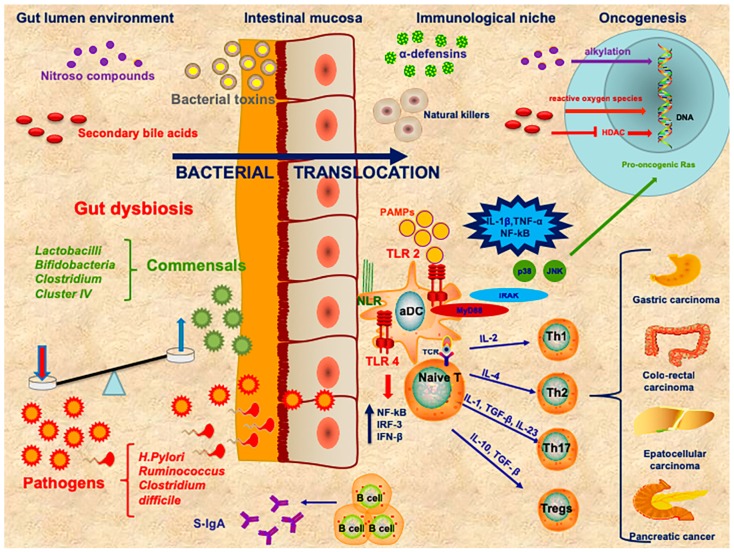Figure 1.
The complex interplay among gut lumen environment, mucosal barrier, immunological niche in oncogenesis. The failure of maintaining homeostatic equilibrium between commensals and pathogens at gut lumen level leads to dysbiosis. The bacterial products enhance the gut permeability leading to bacterial and toxins translocation. Toll-like receptors (TLRs) expressed on activated dendritic cells (aDC) are able to recognize pathogen-associated molecular patterns (PAMPs) and can activate the NF-κB, JNK and p38 mitogen-activated protein kinases. JNK promotes the activation of pro-oncogenic Ras. Other receptors situated on several types of immune cells are represented by nucleotide-binding oligomerization domain-like receptors (NLRs), which are pattern recognition receptors (PRRs) that can activate NF-κB and promote inflammasomes. Other carcinogenetic agents, like nitrous compounds and secondary bile acids, can act respectively as alkylating mediators or via reactive oxygen species at a DNA level. Furthermore, high doses of butyrate inhibit histone deacetylase (HDAC) that is able to inactivate many oncogenic signaling pathways. The presence of pro-inflammatory T-cells can induce pro-inflammatory cytokines at tumor site. The concomitant action of T-regs creates a state of immunosuppression at tumor level.

